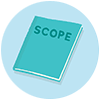There are only two days that matter to you. Two days that count. Your birthday, which is like a million days away, and tomorrow, which is the first day of school. And normally you don’t like school. Because there’s not much to like about it. The hallways always smell funny, and they don’t do nothing but lead you to teachers. And teachers don’t do nothing but remind you that they already got their education and now it’s time for you to get yours right before telling you to head back down the hallway to the principal’s office because you can’t stop talking about how Thomas Baker stepped on your foot with his dirty boots and turned your sneaker into a construction site. Thomas Baker got feet like surfboards. But he don’t surf to school. He apparently hikes through a forest that you’ve never seen around here. Hikes through ditches or something. Swamps, maybe. Anyway, you weren’t even talking to no one about him. You were just murmuring Big Foot Baker under your breath, bending over at your desk, licking your thumb and scrubbing the brown crust from your babies, scratching the dirt off gently with your nail just like how your mother wipes sleep from your eyes on the mornings you’re too lazy to wash your face. You know this is how you bring things back to life. But when it doesn’t work, when Thomas Baker’s boot mud proves itself to be gold medal boot mud, you decide to attack it with one of the pointy corners of a protractor.
How were you supposed to know geometry is apparently more important than your drip? How were you supposed to hear anything Mrs. Montgomery had to say about triangles and diameters and whatever a hypotenuse is when your sneakers are practically bleeding to death? Bleeding! I mean, can’t she see what kind of stress you’re under, dealing with such an emergency while also trying to figure out how to use a protractor (who knows how to use a protractor?) and then the rush of hallelujah that comes over you once you realize the protractor is the answer to really scraping the leather clean (that’s how you use a protractor). Ain’t she ever had her fresh ruined? Had her fit downgraded and dismissed because some little boy ain’t learned how to use his grown man feet yet? Ain’t she ever been through this kind of pain? Maybe she has, but she’s forgotten. So Mrs. Montgomery sends you to the principal’s office. Again. And everybody moos like cows because they’re all immature. Again. And you suck your teeth, but in a mature way.
And that’s school.




